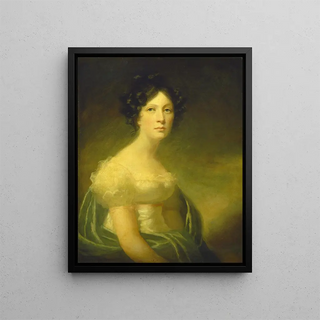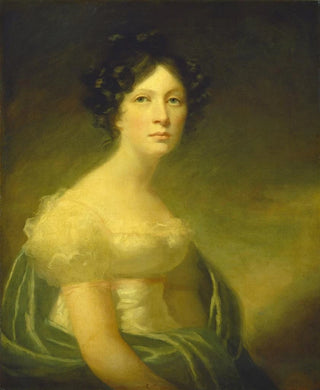Art print | Mademoiselle Jean Christie - Style of Sir Henry Raeburn


View from behind

Frame (optional)
In the fascinating world of art, some works transcend time and culture, captivating viewers and evoking emotions. The art print Mademoiselle Jean Christie - Manière de Sir Henry Raeburn is a striking example. This piece, imbued with delicacy and depth, invites contemplation that goes far beyond mere aesthetic appreciation. It immerses us in early 19th-century England, a period when portraiture reflected social aspirations and individual identities. Through this painting, the artist manages to capture not only the features of his model but also the very essence of her being, making this piece essential for art enthusiasts.
Style and uniqueness of the work
Sir Henry Raeburn's style is distinguished by impressive technical mastery and a keen sense of detail. In this art print, light plays a crucial role, illuminating Mademoiselle Jean Christie's face with almost divine softness. Shadows are skillfully balanced, creating an intimate atmosphere where the viewer is invited to approach, to discover nuances of expression and subtleties of textures. The composition is well-balanced, highlighting the subject while incorporating decorative elements that enrich the visual narrative. Raeburn, with his realistic approach, succeeds in bringing his model to life, transforming the portrait into an open window onto a complex personality. This piece stands out not only for its aesthetic appeal but also for the psychological depth it conveys, making each glance at the artwork unique and personal.
The artist and his influence
Sir Henry Raeburn, an iconic figure of Scottish painting, knew how to mark his era with an innovative style and a humanist approach to portraiture. His works, often imbued with great sensitivity, testify to a profound understanding of human nature. Raeburn was a pioneer in capturing the soul of his subjects, going beyond the conventions of his time. His influence extends well beyond Scottish borders, inspiring many artists across Europe. By exploring themes such as identity, dignity, and psychology, he paved the way for a new way of conceptualizing

Matte finish

View from behind

Frame (optional)
In the fascinating world of art, some works transcend time and culture, captivating viewers and evoking emotions. The art print Mademoiselle Jean Christie - Manière de Sir Henry Raeburn is a striking example. This piece, imbued with delicacy and depth, invites contemplation that goes far beyond mere aesthetic appreciation. It immerses us in early 19th-century England, a period when portraiture reflected social aspirations and individual identities. Through this painting, the artist manages to capture not only the features of his model but also the very essence of her being, making this piece essential for art enthusiasts.
Style and uniqueness of the work
Sir Henry Raeburn's style is distinguished by impressive technical mastery and a keen sense of detail. In this art print, light plays a crucial role, illuminating Mademoiselle Jean Christie's face with almost divine softness. Shadows are skillfully balanced, creating an intimate atmosphere where the viewer is invited to approach, to discover nuances of expression and subtleties of textures. The composition is well-balanced, highlighting the subject while incorporating decorative elements that enrich the visual narrative. Raeburn, with his realistic approach, succeeds in bringing his model to life, transforming the portrait into an open window onto a complex personality. This piece stands out not only for its aesthetic appeal but also for the psychological depth it conveys, making each glance at the artwork unique and personal.
The artist and his influence
Sir Henry Raeburn, an iconic figure of Scottish painting, knew how to mark his era with an innovative style and a humanist approach to portraiture. His works, often imbued with great sensitivity, testify to a profound understanding of human nature. Raeburn was a pioneer in capturing the soul of his subjects, going beyond the conventions of his time. His influence extends well beyond Scottish borders, inspiring many artists across Europe. By exploring themes such as identity, dignity, and psychology, he paved the way for a new way of conceptualizing






